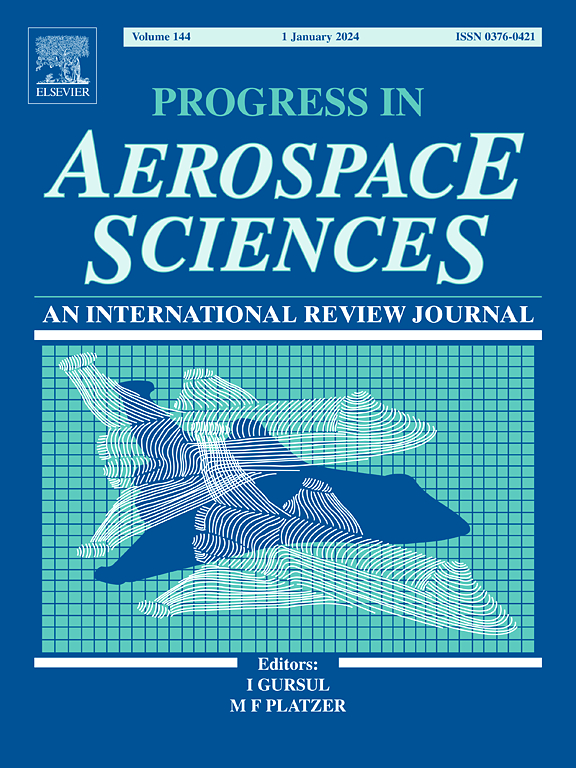空投配置出口模拟方面的进展
IF 11.5
1区 工程技术
Q1 ENGINEERING, AEROSPACE
引用次数: 0
摘要
本文探讨了空投配置模拟的最新进展。利用建模和仿真技术可以在进行昂贵和危险的实验试验之前增强对空投操作的理解。经过验证的模拟还提供了检查更广泛的非标准案例、设计、系统和组件的机会。正在研究的关键物理和模拟参数包括各种空投配置、流动条件、提取和释放时间以及弹射力,所有这些都将与多种降落伞配置和不同几何形状和质量分布的货物有效载荷集成。综述了先进的网格生成技术,湍流建模,自适应网格细化方法,规定和响应的身体运动,接触建模,螺旋桨和发动机建模,降落伞充气的流固耦合,以及研究有效载荷和降落伞稳定性的方法,包括悬挂和提取线的建模。本文详细介绍了两项具体研究:利用重力和降落伞从C-17斜坡上提取各种尺寸的容器,以及考虑到伞兵剖面、重心和质量数据的变化,从C-130飞机部队门提取人员的敏感性分析。本文章由计算机程序翻译,如有差异,请以英文原文为准。
Advances in exit simulations of airdrop configurations
This article explores recent advancements in the simulation of air drop configurations. Utilizing modeling and simulation techniques can enhance the understanding of airdrop operations before undertaking costly and risky experimental trials. Validated simulations also offer the opportunity to examine a wider range of non-standard cases, designs, systems, and components. Key physical and simulation parameters under investigation include various airdrop configurations, flow conditions, extraction and release timings, and ejector forces, all of which will be integrated with multiple parachute configurations and cargo payloads of differing geometries and mass distributions. The review covers advanced mesh generation techniques, turbulence modeling, adaptive mesh refinement methods, prescribed and responsive body motions, contact modeling, propeller and engine modeling, fluid–structure interaction for parachute inflation, and methods to study the stability of payloads and parachutes, including the modeling of suspension and extraction lines. The article details two specific studies: the extraction of various-sized containers from the C-17 ramp using gravity and chutes, and a sensitivity analysis of personnel extraction from the C-130 aircraft troop doors, considering variations in paratrooper profiles, center of gravity, and mass data.
求助全文
通过发布文献求助,成功后即可免费获取论文全文。
去求助
来源期刊

Progress in Aerospace Sciences
工程技术-工程:宇航
CiteScore
20.20
自引率
3.10%
发文量
41
审稿时长
5 months
期刊介绍:
"Progress in Aerospace Sciences" is a prestigious international review journal focusing on research in aerospace sciences and its applications in research organizations, industry, and universities. The journal aims to appeal to a wide range of readers and provide valuable information.
The primary content of the journal consists of specially commissioned review articles. These articles serve to collate the latest advancements in the expansive field of aerospace sciences. Unlike other journals, there are no restrictions on the length of papers. Authors are encouraged to furnish specialist readers with a clear and concise summary of recent work, while also providing enough detail for general aerospace readers to stay updated on developments in fields beyond their own expertise.
 求助内容:
求助内容: 应助结果提醒方式:
应助结果提醒方式:


